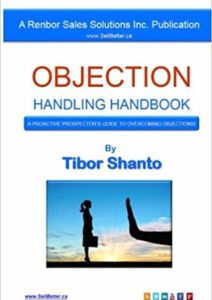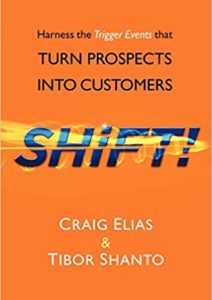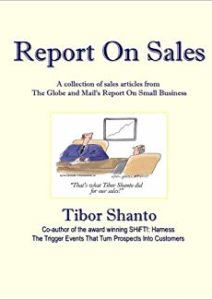Most salespeople (think about the 80% on the wrong side of the 80/20 rule) are overly optimistic, usually to their detriment. Don’t get me wrong, I am not looking for pessimistic brooding hoards, but viewing sales through rose-tinted glasses has cost many salespeople many sales. I remember reading the “Dictionary for the Disenchanted,” which defines a pessimist as being the same as an optimist, just better informed.
So what make one salesperson more informed than the next — given they both start out with the same set of facts?
The answer is to always include a healthy dose of cynicism, and deal with all the facts, not just selective ones.
Being optimistic while ignoring relevant information, “not letting the facts cloud the issue,” is a recipe for disaster, one many salespeople live daily but could avoid if they tempered their optimism and at least considered the alternatives, even if in the end they choose to ignore them. Taking measures to validate that there is something to be optimistic about creates a balance that will increase wins, and allow them to abandon non-opportunities early.
Having trained thousands of salespeople, I have seen many use optimism to make up for missing elements of the sale. That might be due to their own skill set, the merits of the deal, the buyer’s motivation, or the propensity to act. Something looks good, they slap a coat of happy on it, and then wonder why it doesn’t come through in the end. Making matters worse, rather than dealing with the outcome in a sensible way, they choose to look at the bright side, and explore only their wins.
While some pundits encourage only reviewing wins, I believe there is more to gain by understanding why you lost and how you can change moving forward.
An aspect of sales that is negatively impacted by optimism is your pipeline. I hear rationales every day as to why an opportunity that by any measure is dead or gravely ill should be looked at as having potential. “No, they’re really interested!” Have you ever heard that? I was taught a simple sales rule early on — the only indication of interest is action. I have a lot of people talk to me about how interested their prospects are, yet when you introduce the litmus test of action, these opportunities are dead. There is no real action by the prospect or the seller — lots of talk, lots of plans, lots of everything but what counts — action. A little cynicism here would go a long way to clearing the waste in the pipeline. The challenge for these salespeople is when you do that, they come face to face with the reality that there is little in the way of closable deals, meaning they have to prospect. But by maintaining a positive outlook they can avoid ugly realities and avoid prospecting. Double bonus! No wonder they are so positive.
Disproportionate positivism hits relationship sellers especially hard. For them it is the relationship uber alles. Being real about your prospects requires you to establish some basic facts early: budgets, timelines, decision process and makers, requirements/expectations, propensity to change, who else are they looking/talking to, and more. All of these require you ask some key and direct (some would say difficult or direct) questions early. But many won’t, because “it may impact my ability to build rapport and a relationship.” Frankly, I’d rather you build a solid and monetizable pipeline. Relationships are great, but they usually evolve after they become your customer. When was the last time you got commission or had quota retired by gaining a relationship? Have you ever sold to someone prior to forming a relationship that followed later?
In a recent Harvard Business Review article by Steve W. Martin, What Separates the Strongest Salespeople from the Weakest, the best salespeople (as measured by performance) are in fact inwardly pessimistic — questioning the buyer, motives, aspects of the sale, etc. This allows them to qualify/disqualify and be more effective sales winners (as opposed to the large group of relationship-starved professional visitors who are in sales). While “possibilities” are endless, reality comes down to fewer choices, some harder than the others.
Ask the hard questions, let your pessimistic side into the sale and ask key questions of yourself and your buyer. If the prospect is still there when the questions have been asked and answered, great; if not you saved yourself a whole bunch of time and sorrow. The cost, as always, is that you will have to go and prospect for new prospects to replace the ones pessimism saved you from. For some, staying unrealistically optimistic (with all its consequences), is still easier than the reality of continuous prospecting. More on that to come soon.
Art: Christy thefantasim














